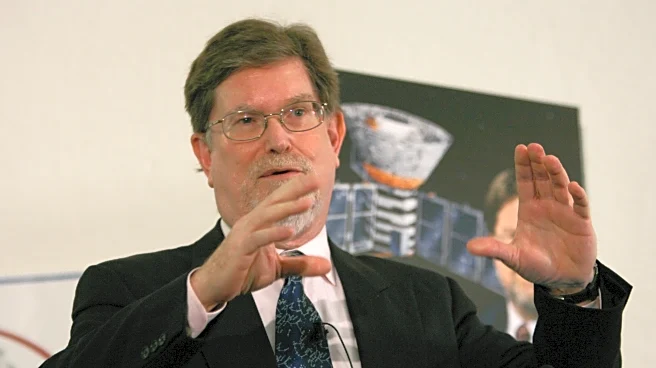What's Happening?
The 1965 Nobel Prize in Physics was awarded to Sin-Itiro Tomonaga, Julian Schwinger, and Richard Feynman for their significant contributions to the field of quantum electrodynamics (QED). Their work provided a robust relativistic theory of QED, addressing fundamental issues in the physics of elementary particles. Each physicist approached the problem uniquely, which was evident in their Nobel lectures. Tomonaga, in particular, developed a method to manage the infinities in QED by building on ideas from his colleague Shoichi Sakata and others. He concluded that the infinities in the scattering process could be attributed to electromagnetic mass and electric charge, which could be controlled through renormalization.
Why It's Important?
The recognition of Tomonaga, Schwinger, and Feynman underscores the critical advancements in understanding the interactions of elementary particles. Their work laid the foundation for modern particle physics and has had lasting impacts on theoretical physics. The development of a coherent QED theory has enabled further exploration into the fundamental forces of nature, influencing both academic research and practical applications in technology and materials science. The ability to manage infinities in theoretical models has also paved the way for more accurate predictions and experiments in particle physics.
What's Next?
The advancements in QED continue to influence current research in particle physics and related fields. The principles established by Tomonaga, Schwinger, and Feynman are integral to ongoing studies in quantum field theory and the Standard Model of particle physics. Future research may build upon their work to explore new particles and forces, potentially leading to breakthroughs in understanding the universe's fundamental structure.
Beyond the Headlines
The work of these physicists highlights the collaborative and iterative nature of scientific discovery. Their independent yet complementary approaches demonstrate the value of diverse perspectives in solving complex problems. The concept of renormalization introduced by their work remains a cornerstone in theoretical physics, illustrating the importance of mathematical techniques in addressing seemingly insurmountable challenges.












